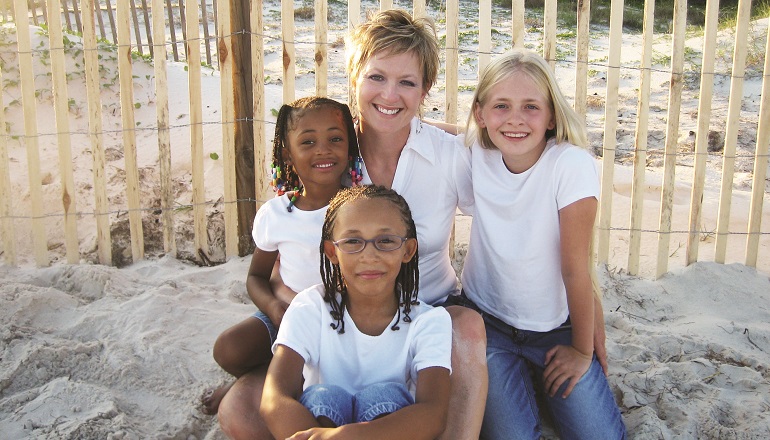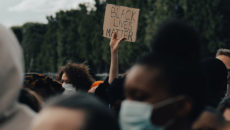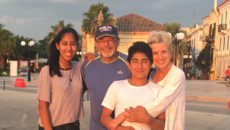“Come on, baby,” I call. “It’s time to do your hair.”
My daughter scurries off to find toys while I gather the tools of the trade: wide-tooth comb, rat-tail comb, detangler, spray bottle filled with water, and a pair of tiny scissors to cut the elastics free. I sit on the sofa, she plops down in front of me, and we settle into a lovely routine of our family’s culture—“doing hair.” It is just one of the ways we changed after our girls came home from Haiti. As an African-American friend told me, “You are now the white mother of a family of color.”
About an hour later, her hair is clean and tangle-free. I sink my fingers into the still-damp, sweet-smelling curls to begin the process of cornrowing, and the old insecurities grip my heart. It is not that I am bad at it. I am good, to be honest. Every Sunday, I receive the highest praise for my efforts from the people who should know: African-American women. Still, each time I pick up the comb and place my hands on one of my daughters’ heads, I feel nervous. What if I don’t do a good job? What if my baby is ashamed of her white mother’s creation?
[“Learning to Care for My Daughters’ Hair”]
Because I know hair matters.
It matters because it is a definitive expression of the African race. It expresses the pride of heritage, and it recalls the pain of discrimination. It is at once the heart’s cry to be validated as a unique creation of God, and, at the same time, not to be defined by any one characteristic of one’s race.
Soon after my parenting journey began, I was pressured by people within my own white culture to give my daughters “less ethnic” hairstyles. Some relatives favored pigtails over cornrows, and when I crowned my girls with Zulu knots, the disgust on their faces was plain to see.
Fortunately, I had a community of black friends who helped me understand that, while it might have been “just hair” to me, the emotions were far more tangled for them, with roots deep into the history of oppression between our two peoples.
[Expert Audio: Caring for Your Child’s Skin and Hair]
As a white family, we had a choice to make when we adopted our Haitian daughters. Would we strip them of their culture, or lay aside our own to let them express theirs? We are black and white, Haitian and American, woven into a family. It is a thing of wonder and beauty.
And I am blessed to be a white mother with a cornrow in her hand.



